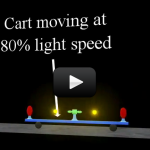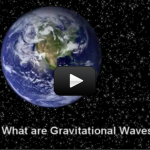Is time travel into the future possible? Are there really such bizarre objects that warp space and freeze time? What about wormholes and tunneling – are those possible? You bet! We’re going to take a sneak peek at the laws of physics that govern these and more in our adventure through relativity.
Scientific Concepts:
- Special Relativity states that the laws of physics are exactly the same for all observers in uniform motion.
- For special relativity “Special” means “unique case”, which is constant speed and direction (uniform motion).
- The moment you accelerate or make a turn (change direction), you move into General Relativity.
- Special Relativity is not just a theory, it’s a proven fact that has been more rigorously tested than all other theories in science.
- Time Dilation: Time does not pass at the same rate for all observers.
- The speed of light is always constant for all observers.
- Different observers can see different things occur for the same event. There is no one preferred viewpoint.
- Lorentz Contraction: An object is longest in a frame which it is at rest and shorter in frames that it is moving.
- Gravitational Time Dilation: Time moves more slowly in regions of higher gravitational forces.
- A more massive object needs a greater force to achieve the same acceleration in direct proportion to its mass.
- Principle of equivalence: Effects of gravity and acceleration are indistinguishable.
- General theory of relativity states that laws of physics are the same in all reference frames.
- Spacetime is curved by gravity.
- Mass and energy cause spacetime to curve.
- Law of motion: in the absence of forces, an object moves in the straightest possible path in curved spacetime.
- Locally that path is always a straight line at uniform speed, but on larger scales it reflects the geometry of spacetime (not Euclidian geometry).










